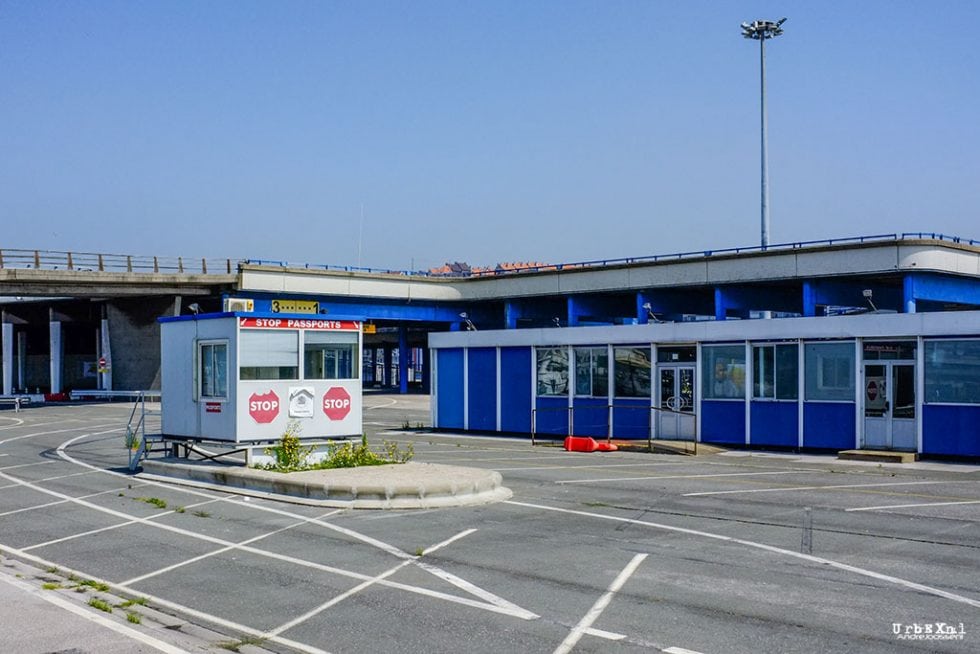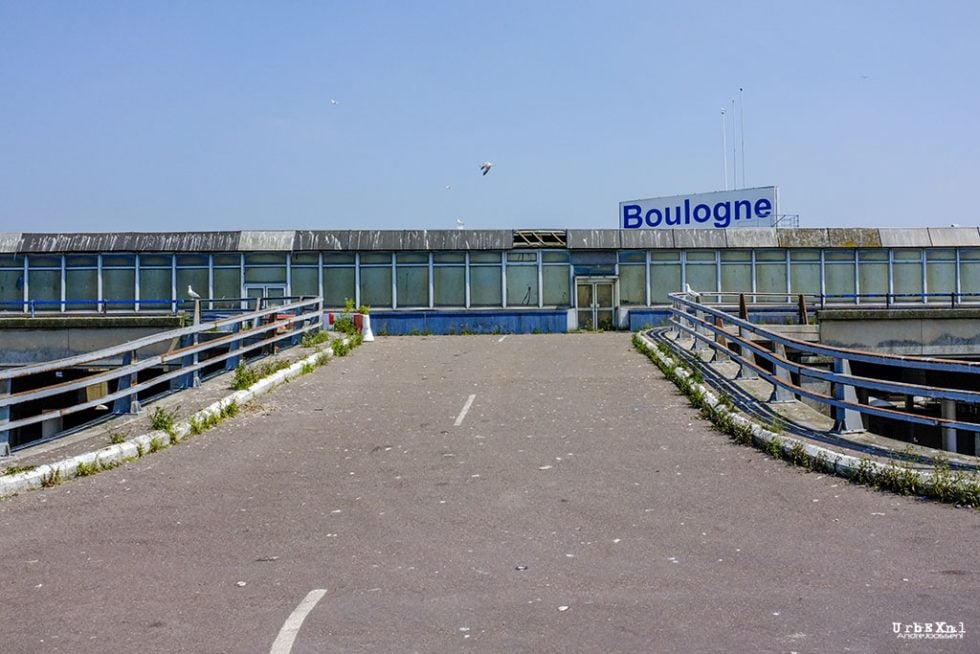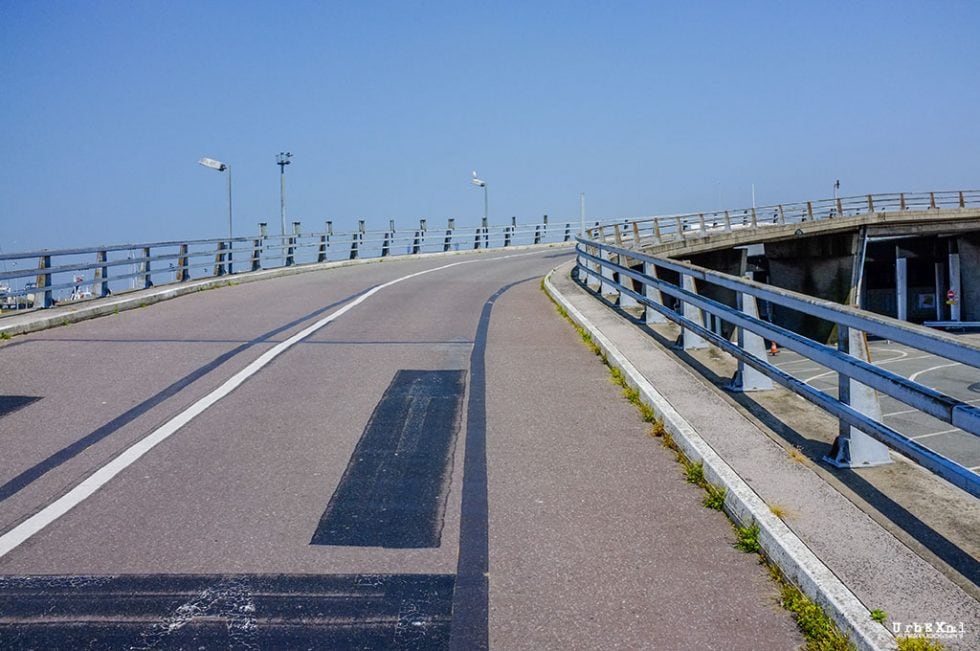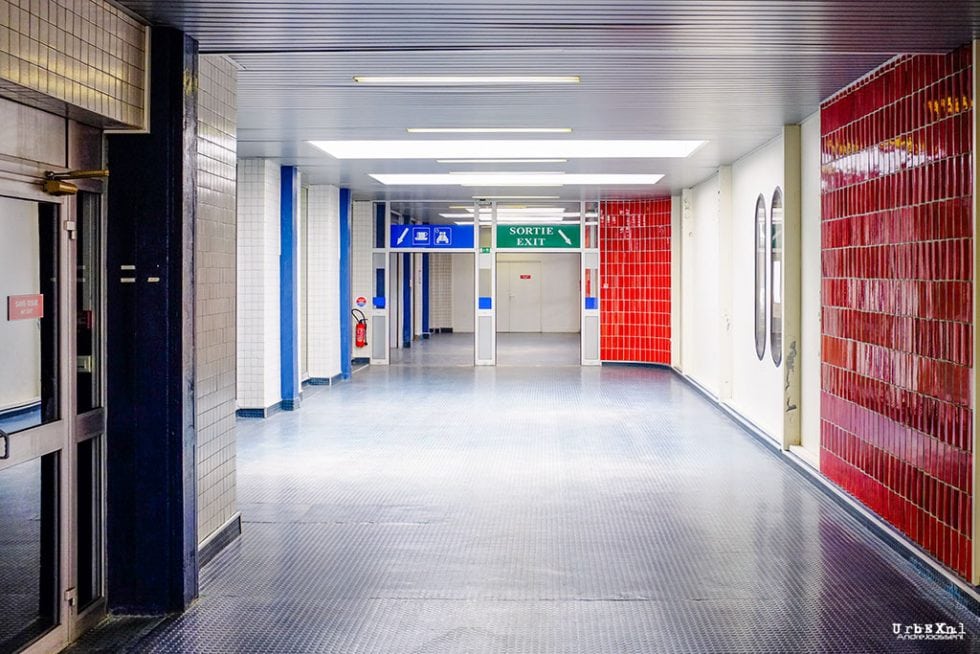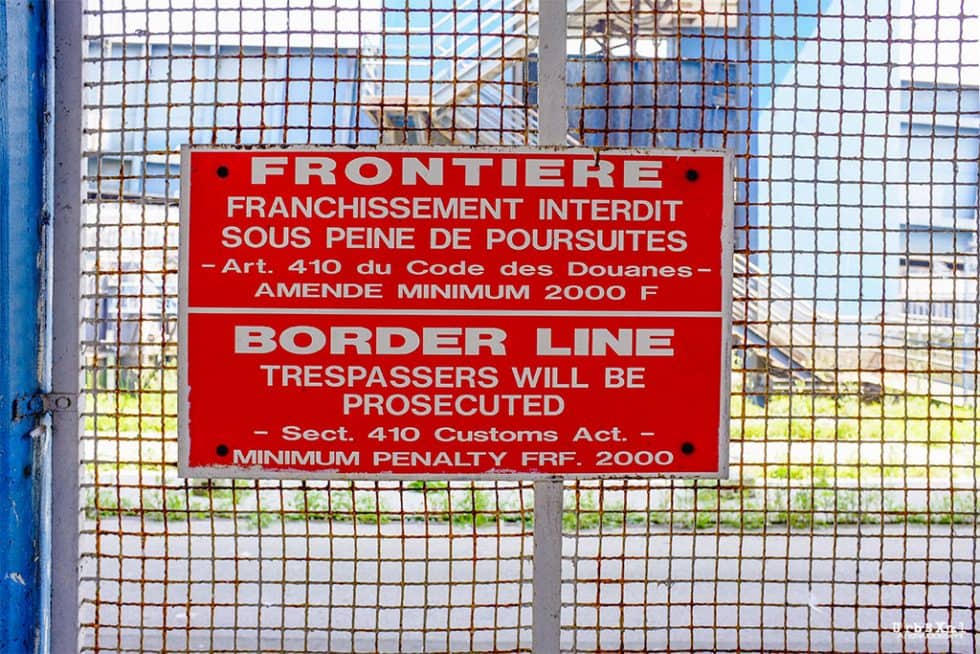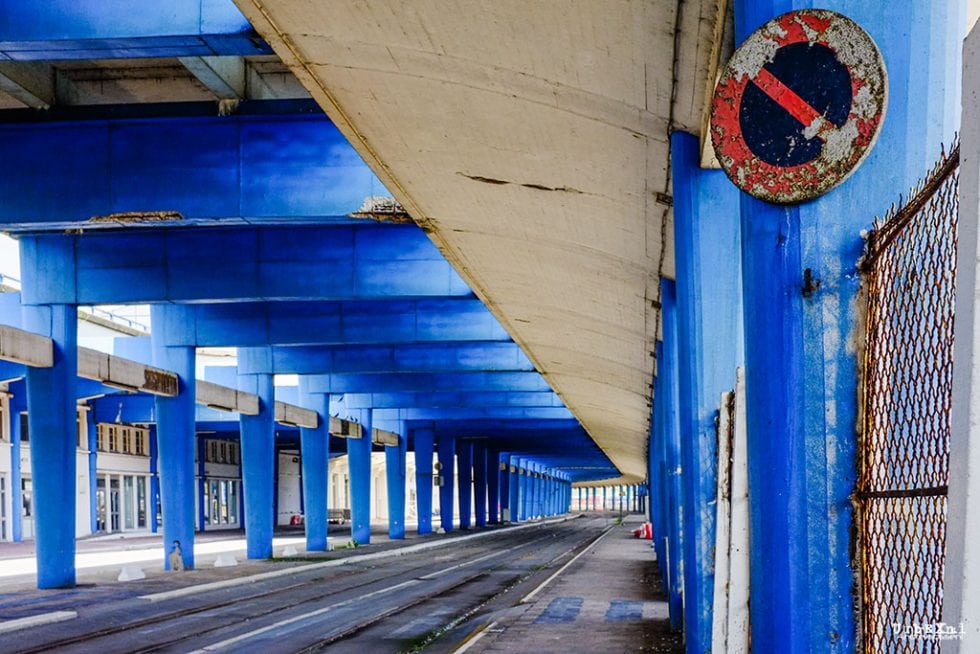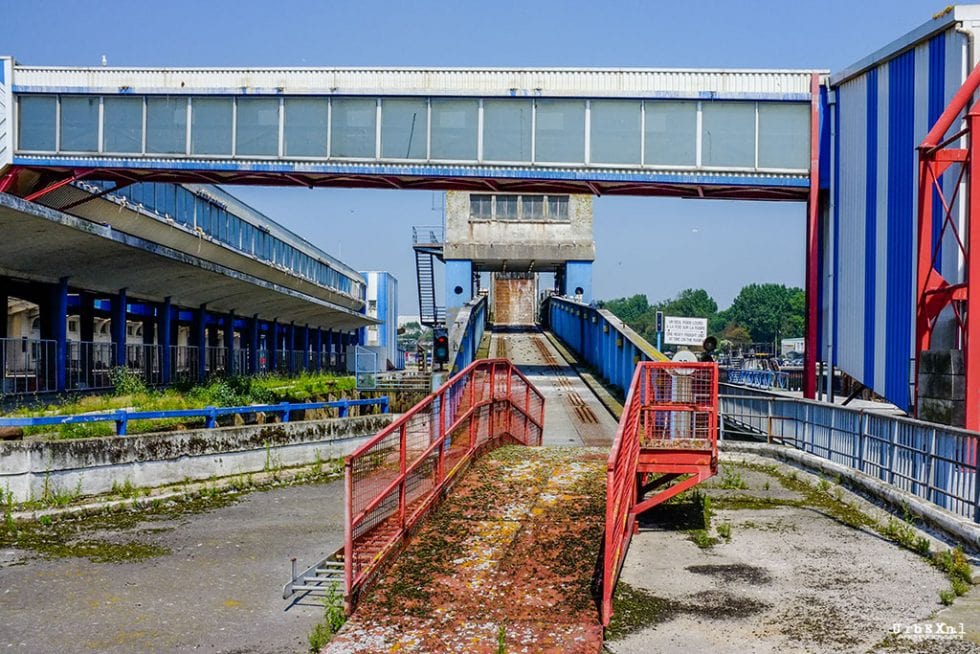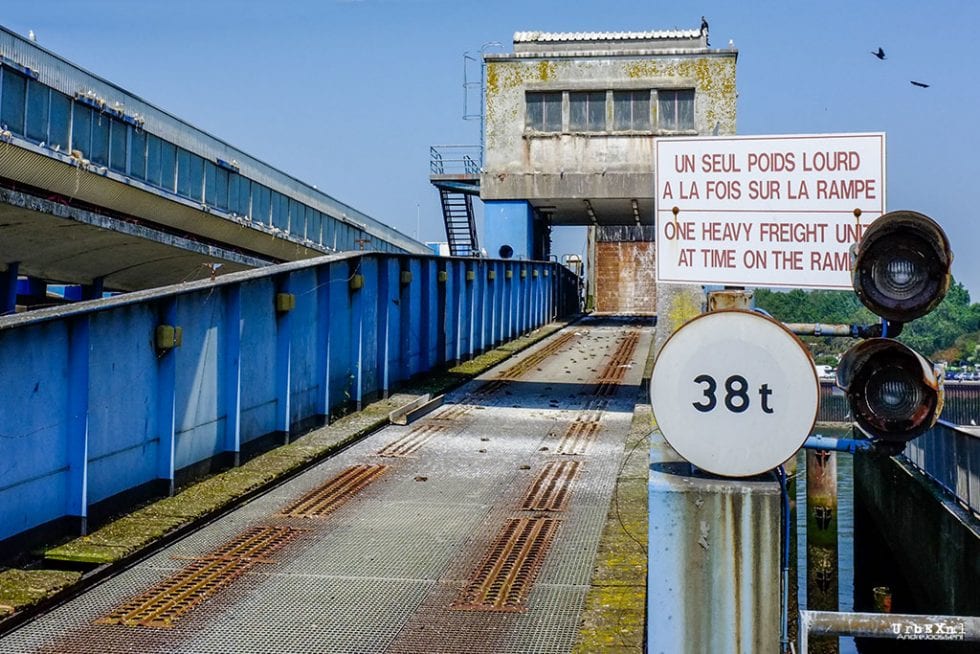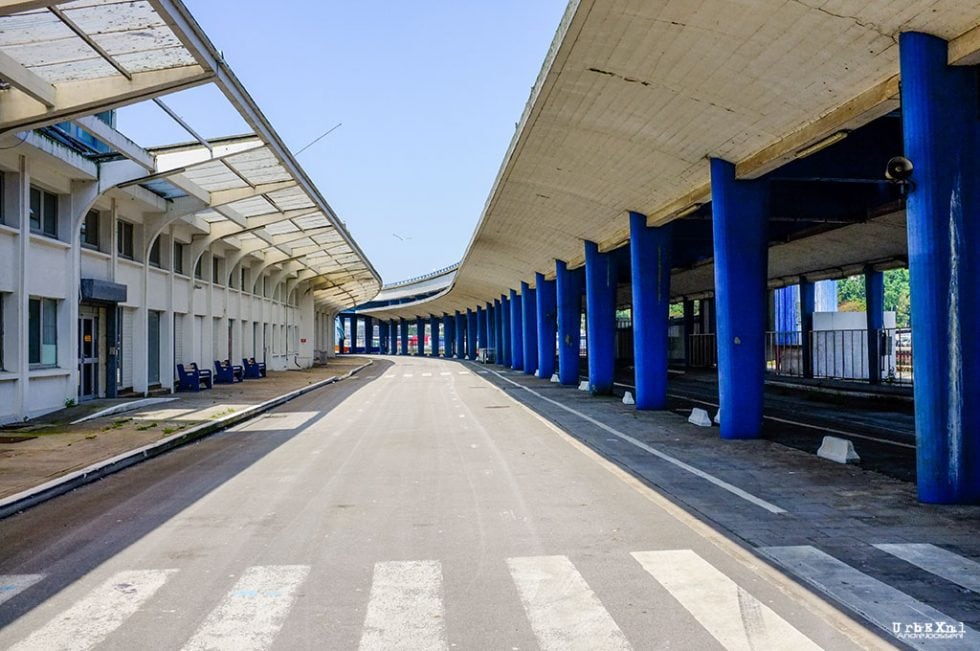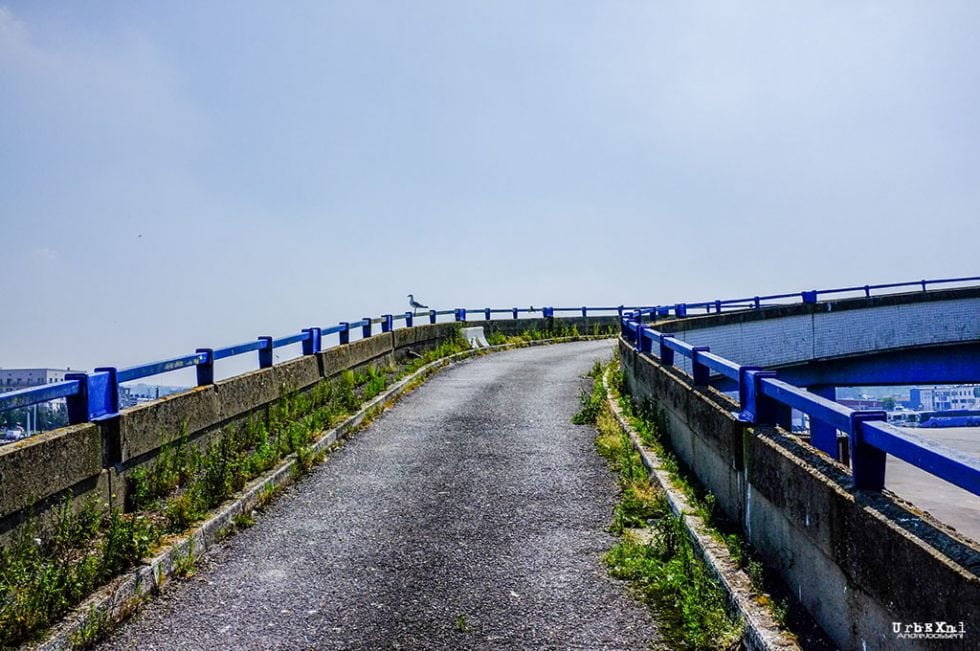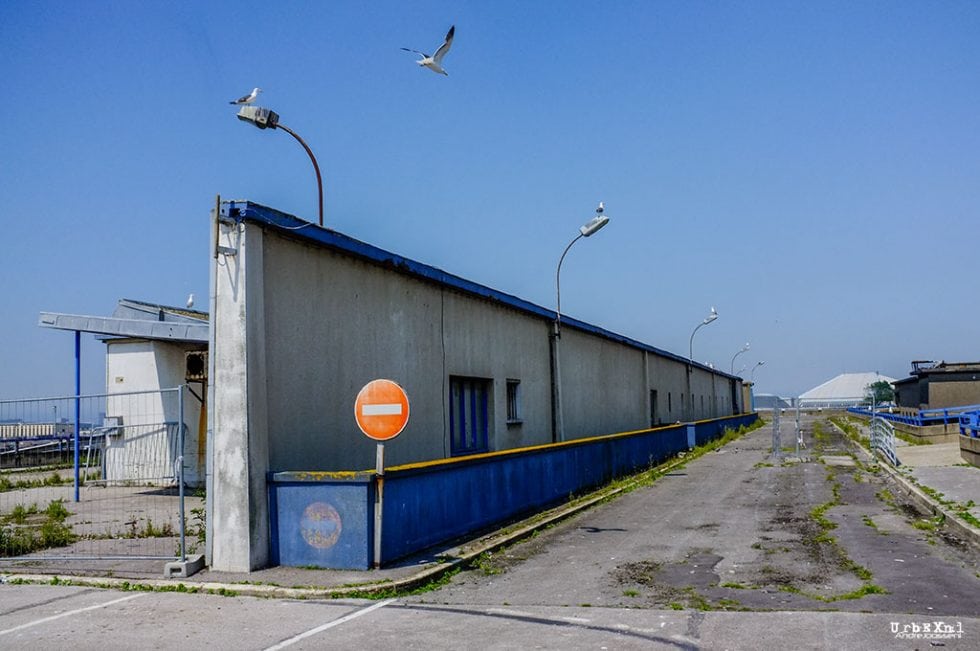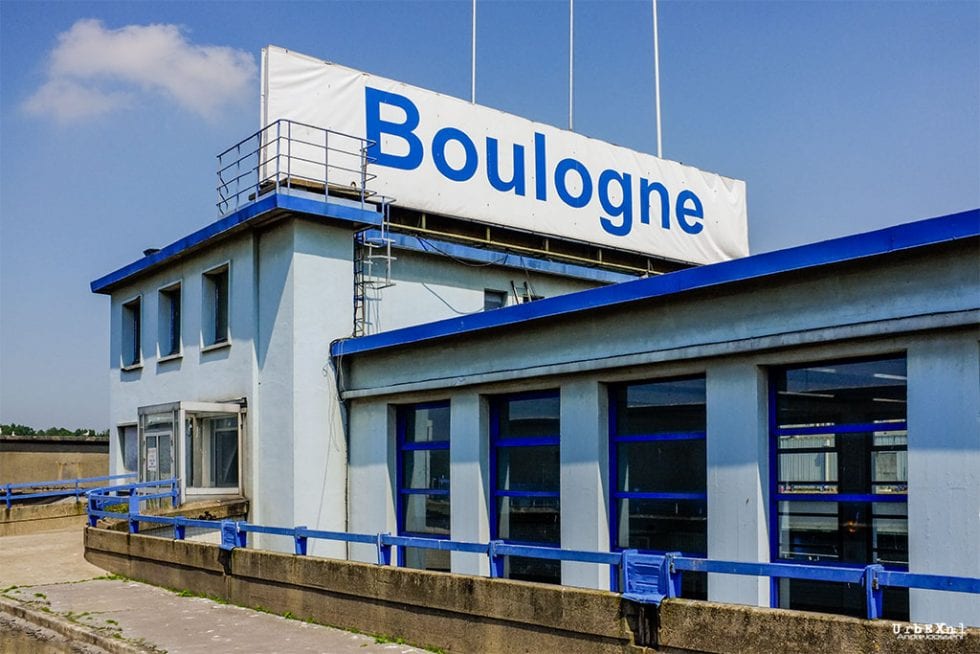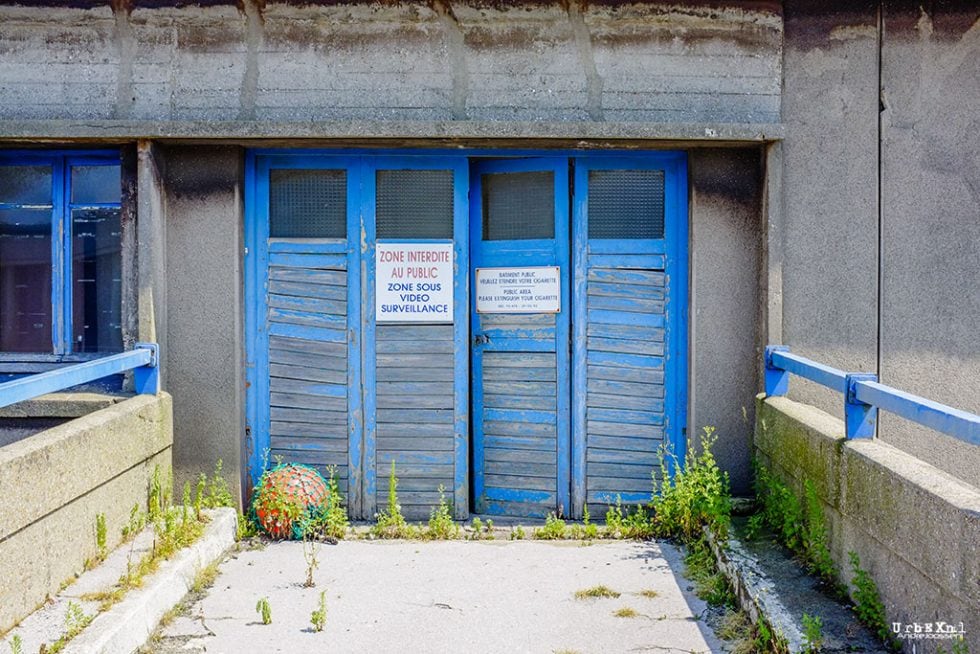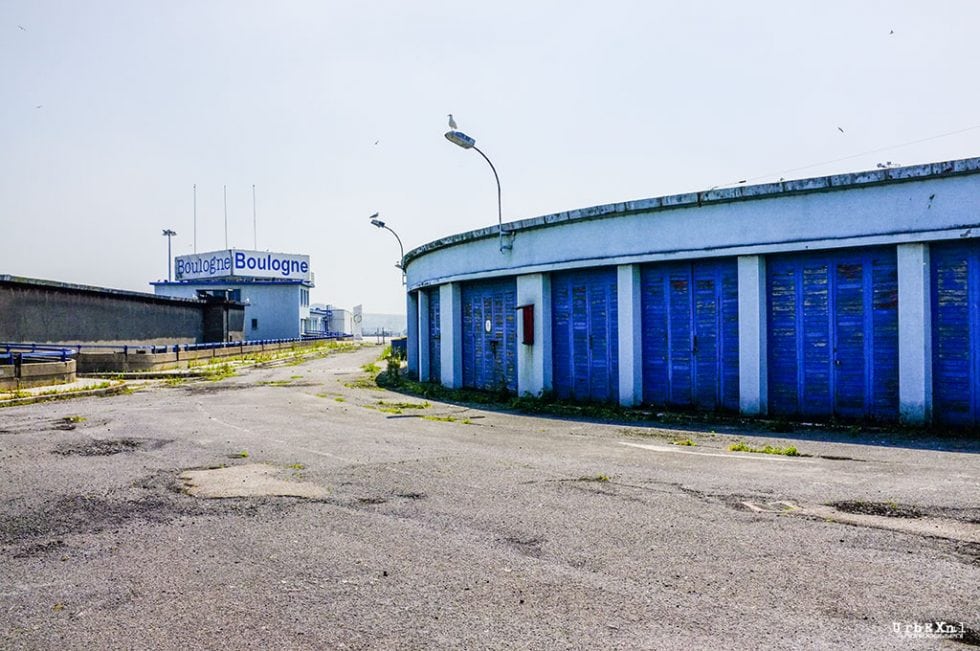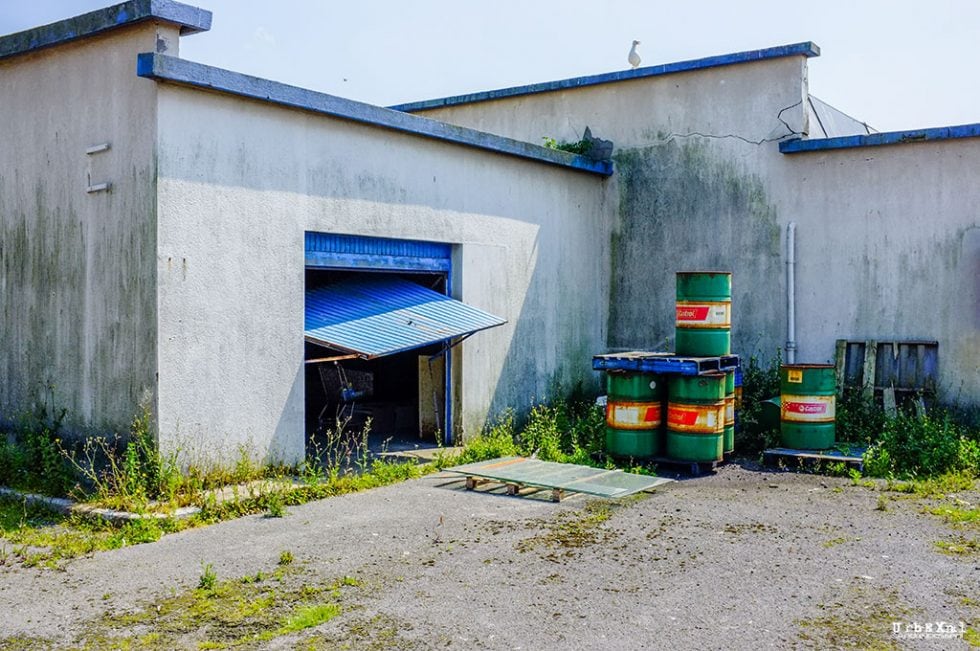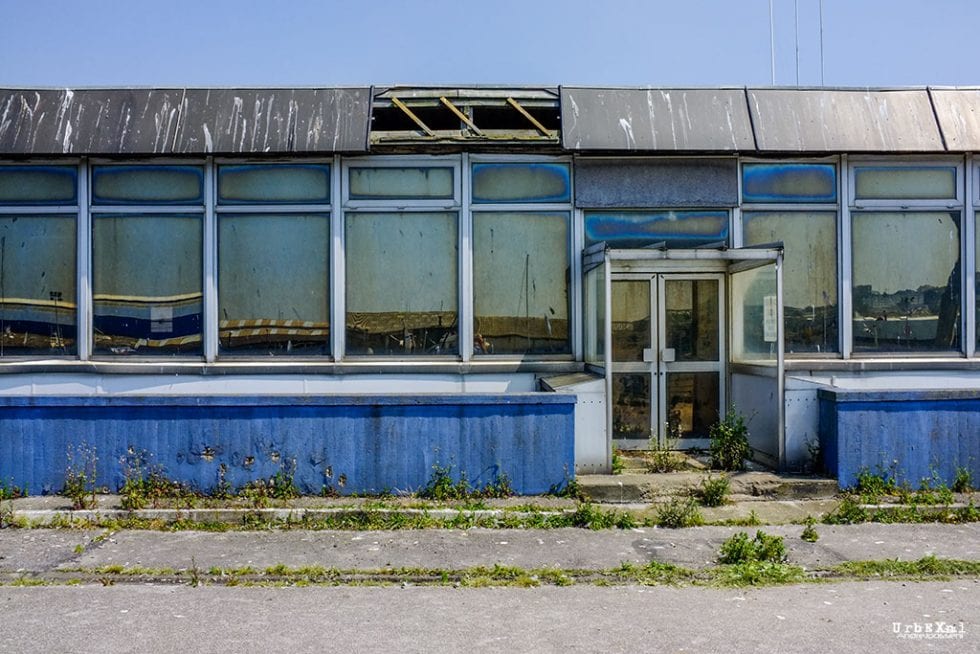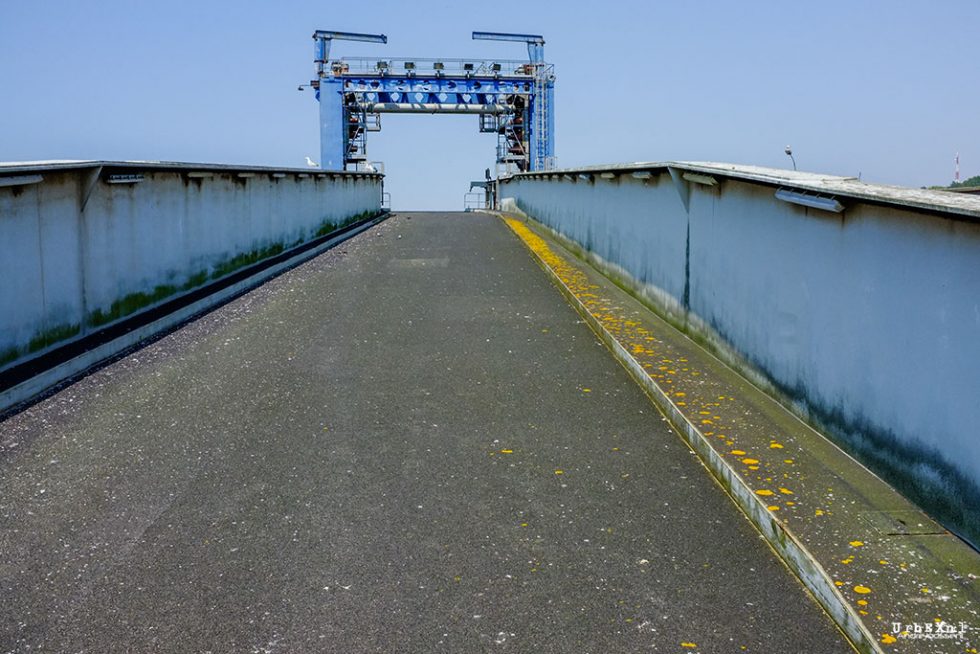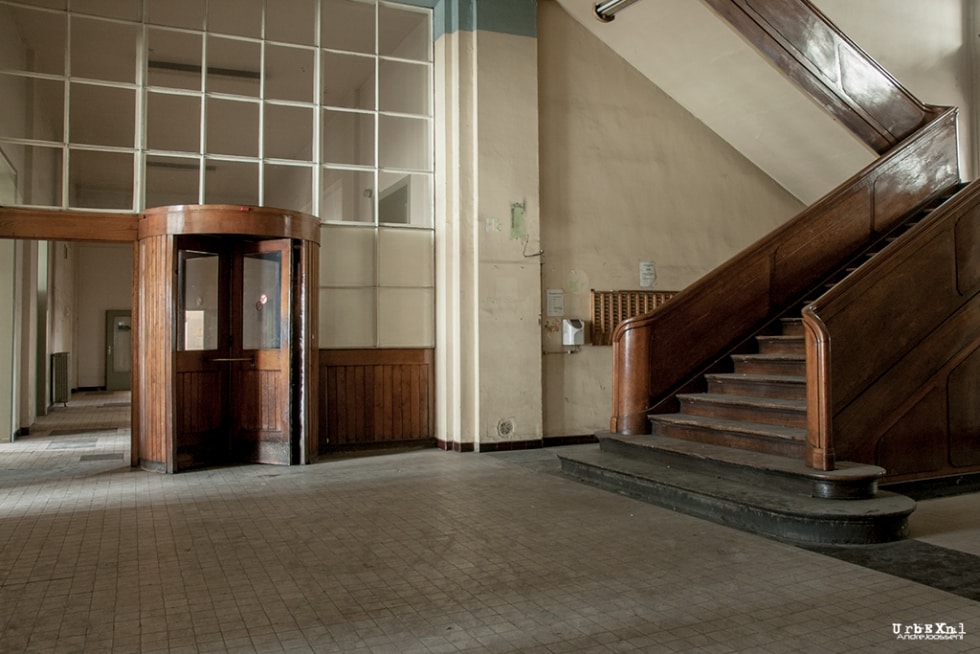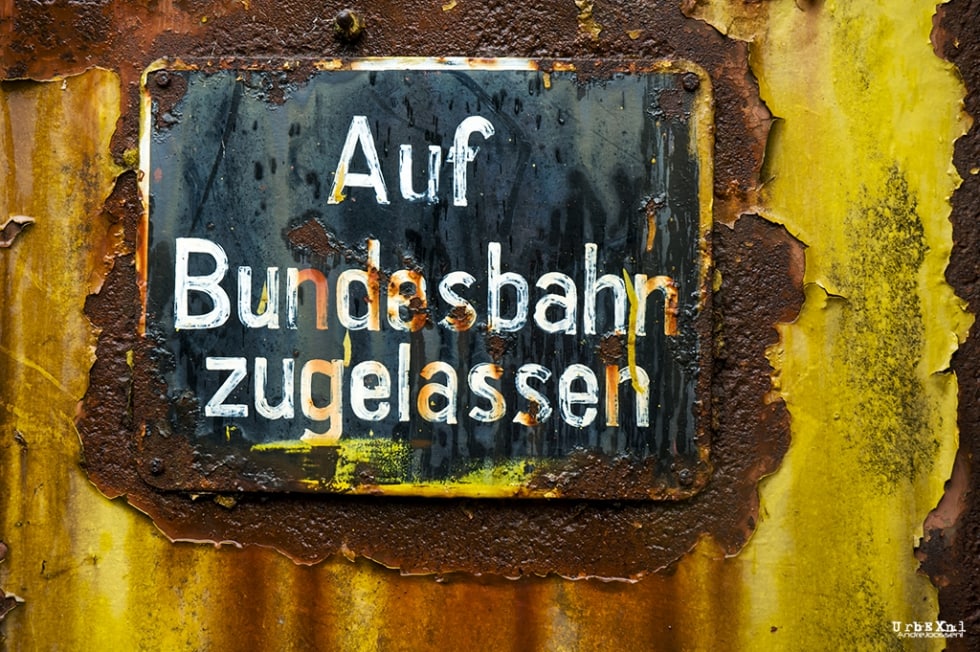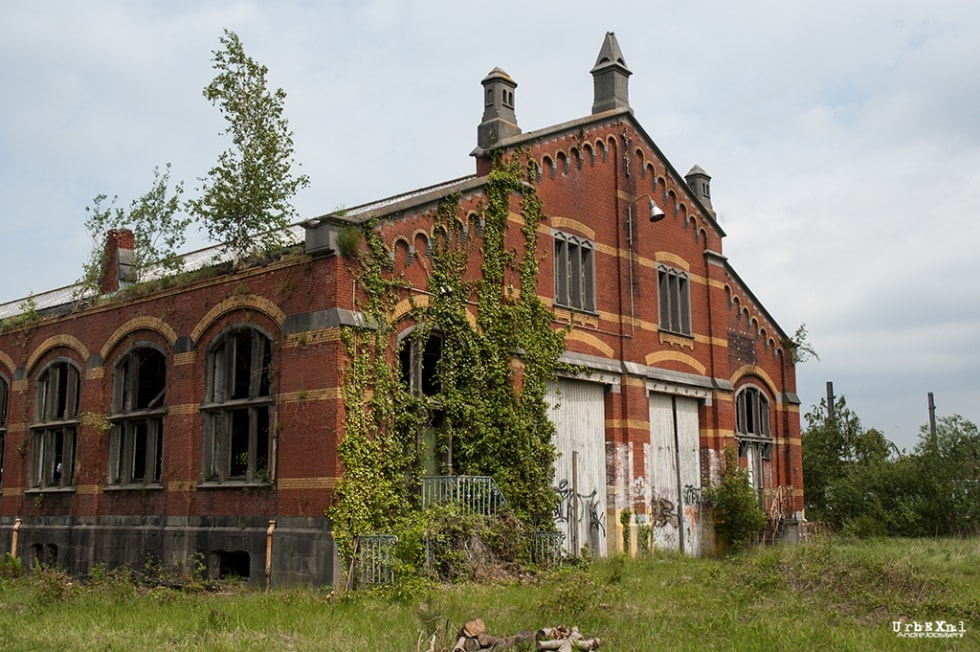Gare Maritime Port de Boulogne
THE ABANDONED FERRY SERVICE IN FRANCE
‘Port de Boulogne’ in France is a train and ferry station for the ferry-service to England. Its ideal geographical position made Boulogne a major port for travel and transport to England. It was a major port, with two or three million passengers passing through each year.
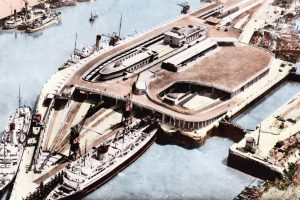
In the 13th century, the first commercial link with England was created in Boulogne. The city Boulogne was massively damaged in the Second World War. After the war, the city rebuilt itself into an important port in the 1950s. The ferry terminal was designed by the architects Georges Popesco and André Lacoste. It was a modernist vision of the future, with sweeping concrete ramps and a unique and complete integration of a car ferry terminal with railway station. Delays in the completion of the car ramp saw the official opening delayed until 16 June 1952.
Boulongne vs. Calais
In the end, Boulogne lost many travelers to the Calais ferry-service. The construction of the Channel Tunnel and the development of the port of Calais at the end of the 20th century caused the decline in Boulogne port traffic and the gradual closure of lines. It started with the closing of the Sealink Stena Line car ferry service to Folkstone in 1991. One year later the final ferry service, operated by P&O, closed. Various freight services continued for a few years, together with Hoverspeeds’ SeaCat. But all services stopped not long after the turn of the century.
For three long years the port was abandoned until Speedferries started a low-cost service in 2004. They moved 710 thousand passengers in 2007. As with most of the more recent operators, they proved to be a short-lived. The port was closed again due to unpaid port dues.
‘LD Lines’ are the latest operator to use Boulogne. They operate from the newly built hub port outside the heart of town. As a result, the use of the traditional arrival point for cross-channel passengers has come to an end in 2009. Until just a couple of years ago, it was possible to wander around the abandoned railway station with its old railway lines and the adjacent quaysides. Today, fencing prevents even that nostalgic pleasure. Despite its cultural and architectural significance, the site will be demolished in the future. But there is also hope that the connection will be set. I visited the site in 2012.

